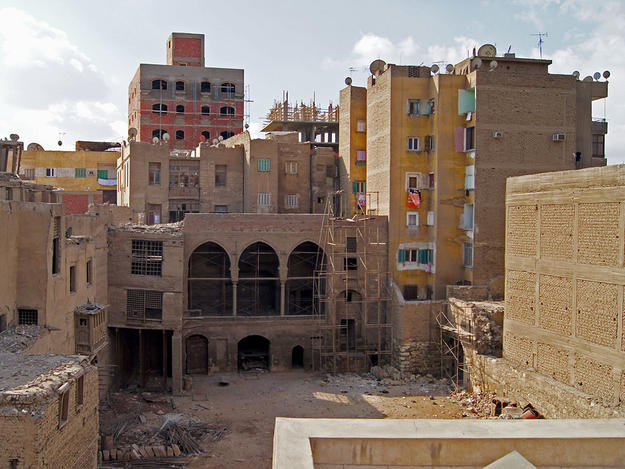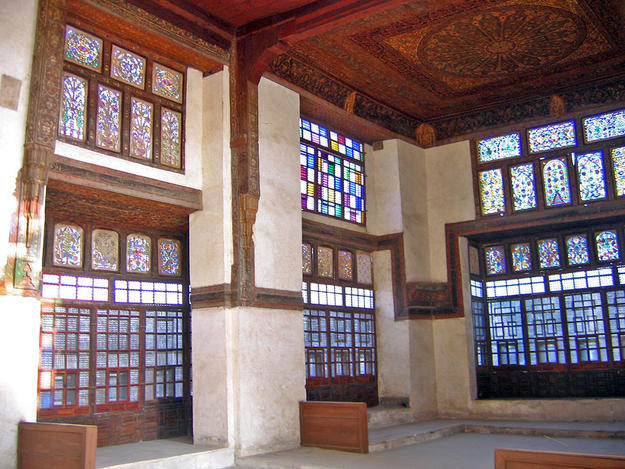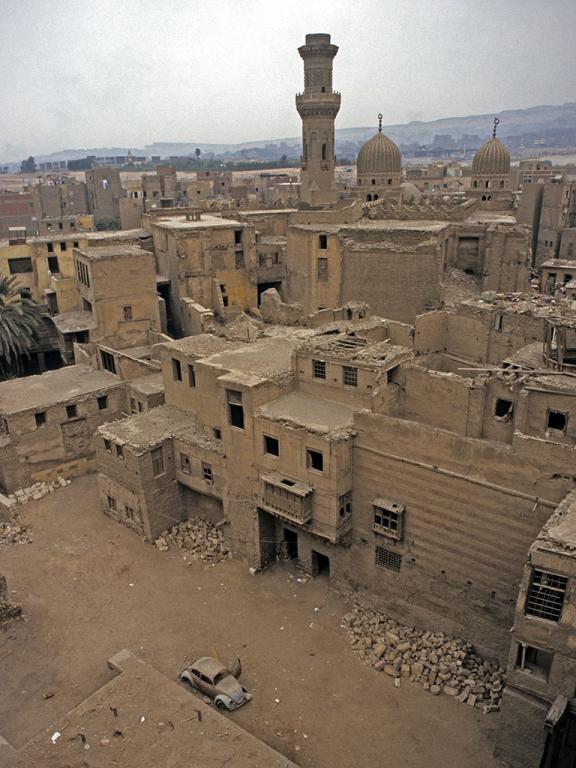Bayt Al-Razzaz
2014 World Monuments Watch
Bayt al-Razzaz is a historic residential complex located in the district of Darb al-Ahmar, where heritage conservation has contributed to revitalization efforts over the last decade. Ahmad Katkhuda al-Razzaz, the heir of a wealthy Ottoman rice merchant, created the complex in the late eighteenth century by joining two adjacent palaces. The building that now forms the eastern half of Bayt al-Razzaz is commonly attributed to the Mamluk sultan Qaitbay, whose reign transformed the urban landscape of Cairo in the late fifteenth century. The western half is a slightly newer addition, probably constructed in the Mamluk or later Ottoman era. The two buildings were remodeled to form an extensive, four-story complex, containing more than 190 rooms. The complex is oriented around two courtyards with a small street frontage that belies the extent of what lies behind it. Bayt al-Razzaz is a highly intact survivor of this type of urban palace, and is intimately associated with the history and evolution of residential life in one of the world's greatest cities. It preserves many spectacular interior spaces, including the largest surviving mandara or reception hall in Cairo.
In the nineteenth century Bayt al-Razzaz was transformed into a high occupancy residential complex, but it has been vacant since the 1960s. The site has been owned for many decades by the Ministry of State for Antiquities (previously the Supreme Council of Antiquities). Efforts to rehabilitate Bayt al-Razzaz date from the late 1970s, led by the American Research Center in Egypt. These culminated in an award-winning restoration of the eastern half of the complex, completed in 2007, which engaged many members of the surrounding neighborhood. However, the western half remains in urgent need of conservation. The site was included on the 2014 World Monuments Watch in order to sustain momentum for its rehabilitation and reuse, which is at risk of being lost in the political turmoil that has unfolded in Egypt since early 2011. In addition to urgent repairs, renewed conservation efforts would help present the exceptional mandara, upgrade the western courtyard, and improve public access to the site.



